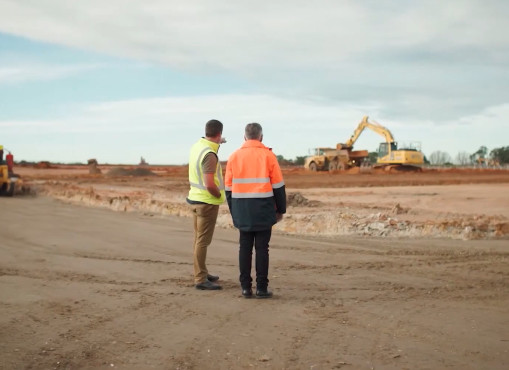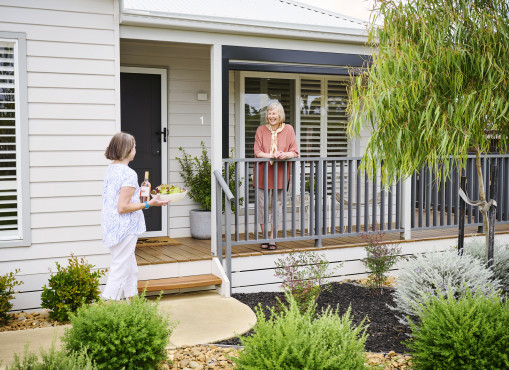- Home
- /
- All blog articles
- /
- Lifestyle Community or Retirement Village - What are the differences?

Lifestyle Community or Retirement Village - What are the differences?

As you follow the yellow brick road towards downsizing and retirement, it’s important to understand the differences between senior living communities.
One of the questions we get asked most frequently is… “are you really not a retirement village?”. And the answer is – we’re really not!
While both lifestyle communities and retirement villages offer on-site amenities, low-maintenance accommodation and a sense of safety and security, there are some key differences.
Here’s how lifestyle communities and retirement villages are different…
Homeowners
Lifestyle communities typically attract younger, active, independent, like minded semi-retired and working downsizers who are seeking a space that’s truly their own, striking the perfect connection between connection and privacy; independence and activity. Typically at the beginning of their downsizing journey, looking to free up equity and unlock possibilities.
Because lifestyle communities are different to retirement villages, you don’t need to be retired to make your move! While many homeowners within these communities are retired, there are still a number of individuals who work full-time, part-time, casually or are self-employed.
Retirement villages generally cater for an older age group who are further down the pathway to needing more support. The average age of people moving into a retirement village is 78 years old.
Amenities and activities
Both lifestyle communities and retirement villages offer a range of on-site facilities to make staying active and social easy. You’ll often find indoor swimming pools, bowling greens, gymnasiums and libraries at a range of senior living communities, but we like to think ours are a cut above the rest!
All of our communities feature an impressive range of resort-style amenities that make active living oh so effortless and make you feel like you’re on holiday every day.
Some of the facilities you’ll find at our communities include:
- Business centre
- Micro Brewery
- Communal Boat
- Communal Electric bikes
- Communal electric cars
- Doggy park
- Indoor pool and spa
- Gymnasium
- Wellness centre
- Sauna
- Cinema
- Tennis court
- Pickleball court
- Bocce or croquet lawn
- Workshop
- Bowling green
- Craft and art studio
- Function spaces
- Dog wash
Models
Perhaps the biggest difference between lifestyle communities and retirement villages is the model under which they operate.
Lifestyle communities operate under a land lease model, whereby homeowners own their home while leasing the land.
Under a retirement village model, residents often only have a license right to occupy a home, not own it.
Fees
Learn more about our costs, fee's and savings here.
Legislation
The legislation for lifestyle communities and retirement villages varies depending on the state or territory they’re located in.
Here’s a brief outline of the main differences you’ll find in these legislations:
Retirement villages:
- You may pay stamp duty when you buy into a retirement village home depending on the title, leasehold or licence.
- You may keep some or all of any capital gain minus any deferred management fees.
Lifestyle communities:
- In a lifestyle community, you own the home and pay a weekly or monthly rental on the site the building sits on. For this reason, you are not required to pay stamp duty.
- Because you’re essentially renting the land, you may be eligible for government rental assistance; you can’t apply for rental assistance in a retirement village.
Live a bigger life at Lifestyle Communities®.
If you’re looking to downsize to a friendly and vibrant community of like-minded people, with access to a range of incredible amenities, then we think living at Lifestyle Communities® could be perfect for you!
And don’t just take our word for it – our homeowner surveys show that 95% of our homeowners are prepared to recommend Lifestyle Communities® to friends and family. Also, 52% of all our new home sales are as a result of a referral by satisfied existing homeowners.
An important point to remember is that no two communities are the same, so we recommend researching and visiting your local communities before deciding which one’s the perfect spot for you.


